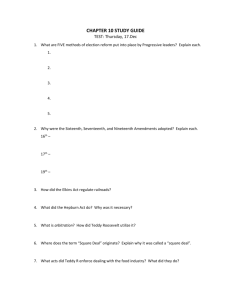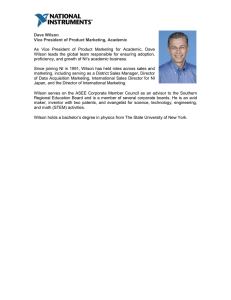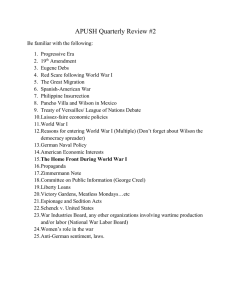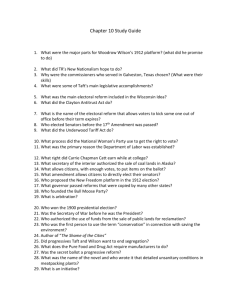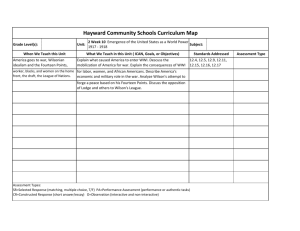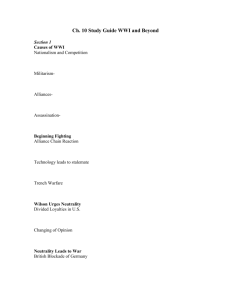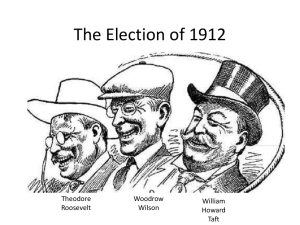Wilsonian Progressivism at Home and Abroad (1912-16)
advertisement
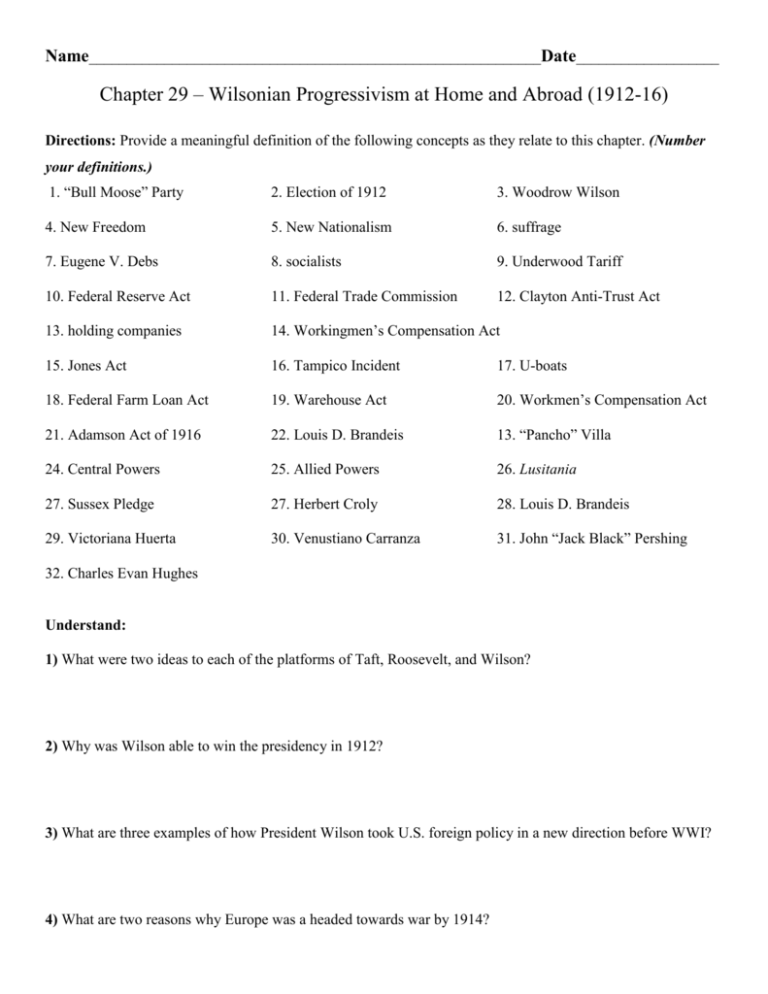
Name____________________________________________________________Date___________________ Chapter 29 – Wilsonian Progressivism at Home and Abroad (1912-16) Directions: Provide a meaningful definition of the following concepts as they relate to this chapter. (Number your definitions.) 1. “Bull Moose” Party 2. Election of 1912 3. Woodrow Wilson 4. New Freedom 5. New Nationalism 6. suffrage 7. Eugene V. Debs 8. socialists 9. Underwood Tariff 10. Federal Reserve Act 11. Federal Trade Commission 12. Clayton Anti-Trust Act 13. holding companies 14. Workingmen’s Compensation Act 15. Jones Act 16. Tampico Incident 17. U-boats 18. Federal Farm Loan Act 19. Warehouse Act 20. Workmen’s Compensation Act 21. Adamson Act of 1916 22. Louis D. Brandeis 13. “Pancho” Villa 24. Central Powers 25. Allied Powers 26. Lusitania 27. Sussex Pledge 27. Herbert Croly 28. Louis D. Brandeis 29. Victoriana Huerta 30. Venustiano Carranza 31. John “Jack Black” Pershing 32. Charles Evan Hughes Understand: 1) What were two ideas to each of the platforms of Taft, Roosevelt, and Wilson? 2) Why was Wilson able to win the presidency in 1912? 3) What are three examples of how President Wilson took U.S. foreign policy in a new direction before WWI? 4) What are two reasons why Europe was a headed towards war by 1914?



